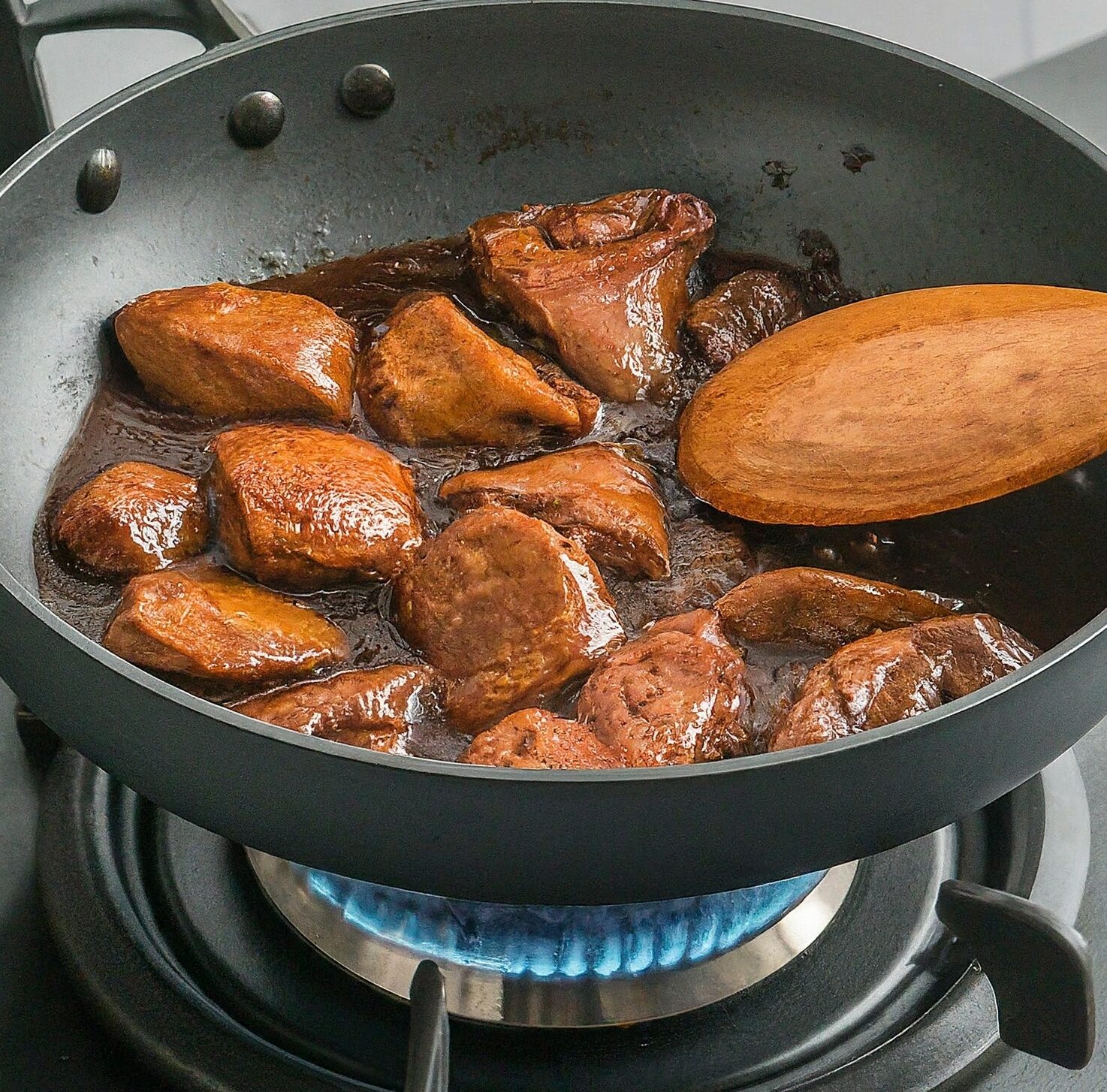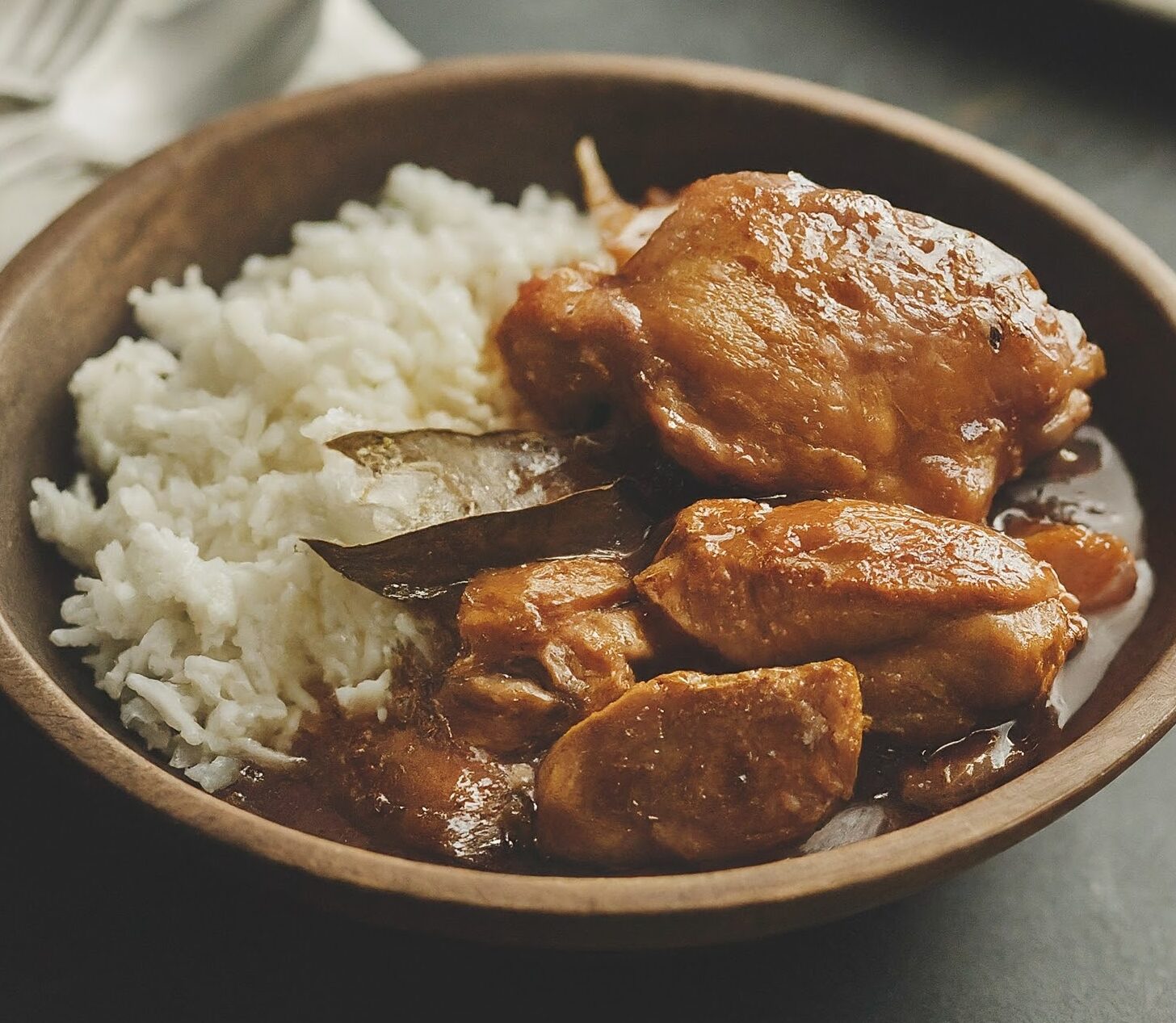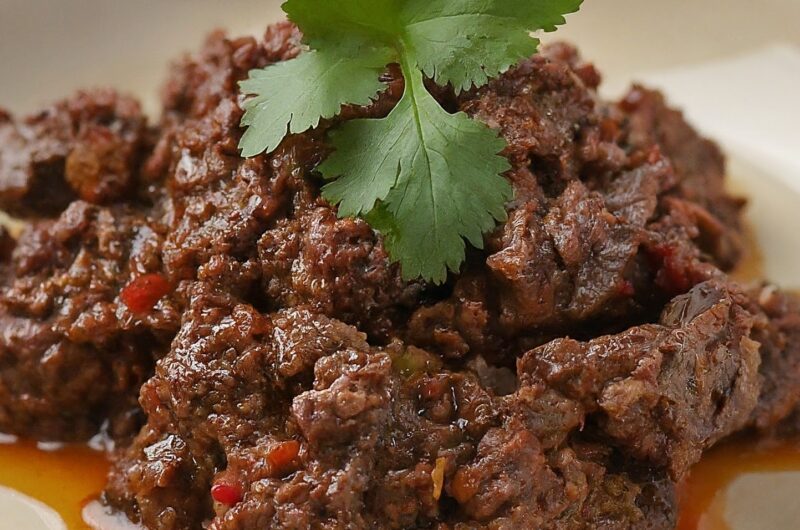Adobo is a Filipino stew that has captivated food lovers around the world with its rich flavors. This dish is so popular that most Filipino households prepare it at least once a week, if not daily. It typically features;
- Chicken or pork as the main protein
- Marinade of vinegar and soy sauce
- Garlic and peppercorns
- Bay leaves
The cooking method for adobo originated during the Spanish colonial era where they were preserving meat using vinegar and salt. Filipinos embraced this method, adding their own local spices and turning it into a delicious staple of Filipino cuisine.
Adobo: A Filipino Culinary Treasure
Course: MainCuisine: Filipino4
servings15
minutes45
minutes320
kcalIngredients
1 lb chicken or pork, cut into serving pieces
1/2 cup vinegar (preferably cane vinegar or white vinegar)
1/4 cup soy sauce
6 cloves garlic, minced
1 tsp whole peppercorns
2 bay leaves
Water or broth, as needed
Salt and pepper, to taste
Directions
- In a deep pot, combine the meat, vinegar, soy sauce, garlic, peppercorns, and bay leaves. Add enough water or broth to cover the meat.

- Bring the mixture to a boil, then reduce the heat to low and let it simmer for 45-60 minutes, until the meat is tender and the sauce has thickened. Taste and adjust the seasoning with salt and pepper as needed.

- Optionally, you can remove the meat from the sauce and fry it until crispy for a delightful contrast of textures.

- Serve your adobo with steamed rice and enjoy the tantalizing flavors of this Filipino classic.

Aboutyummy Tips and Tricks
- Use the right vinegar: Traditional adobo is made with Filipino cane vinegar, also known by iloco. It has a stronger flavor than most white distilled vinegars so that it complements, rather than overwhelms, the meat. White wine, sherry or Champagne vinegars can also be used, but apple cider vinegar makes a fine substitute.
- Brown the meat on the stove: If you’re wanting to up the flavor of the stew – and why wouldn’t you? – add the pieces of meat to a hot frying pan and brown for a couple of minutes before adding to the braising liquid. This increases the depth of flavor.
- Add aromatics: Add sliced onions, garlic, ginger or lemongrass along with the water and wine for braising.
- Marinate it: If you want to marinate the meat, do it in the mixture of vinegar, soy sauce and aromatics for half an hour to an hour before cooking.
- Tweak the sauce: several minutes before you finish cooking, taste the sauce, and decide if you’d like the balance of vinegar, soy and salty to change. Coax the sauce to where you want it; you can thicken it by simmering it longer.
- Play with textures: remove the meat from the sauce toward the end and fry it over high heat until browned and crisp, then return it to the sauce.
- A kick of chili: Some of these can consist of adding a few whole dried chilies or a good sprinkle of dried chili-flakes to the braising liquor.
- Serve with: Steamed rice steadily accompanies adobo, but go the Mexican route with bread or tortillas to sop up the sauce. Slice green onions or cilantro for brightness.
- Adobo is even better on day 2: As the flavors have a chance to meld, the meat, poultry or tofu gain complexity and a new dimension. Adobo leftovers: a great excuse to make sandwiches, tacos, or fried rice.
- Play with the proteins: Chicken or pork are the classic choices, but try adobo with beef, seafood or even tofu for a vegetarian version.
These hints and tricks will help you prepare an adobo that will make you feel like you are in the Philippines with each spoonful.
Nutrition Facts
4 servings per container
- Amount Per ServingCalories320
- % Daily Value *
- Total Fat
18g
28%
- Saturated Fat 5g 25%
- Cholesterol 95mg 32%
- Sodium 1050mg 44%
- Potassium 10mg 1%
- Total Carbohydrate
4g
2%
- Sugars 1g
- Protein 34g 68%
- Calcium 2%
- Iron 11%
* The % Daily Value tells you how much a nutrient in a serving of food contributes to a daily diet. 2,000 calories a day is used for general nutrition advice.
Vernon Alston, a former chef, is an extraordinary personality with a rich history of food and a creative cooking style. Being the one for Vernon high proficiency in pro cuisine and also thanks to the years of his experience, he has succeeded in enhancing his skills, thus, deputtering the reputation of him as a chef, who is league in creating unforgettable dishes.


